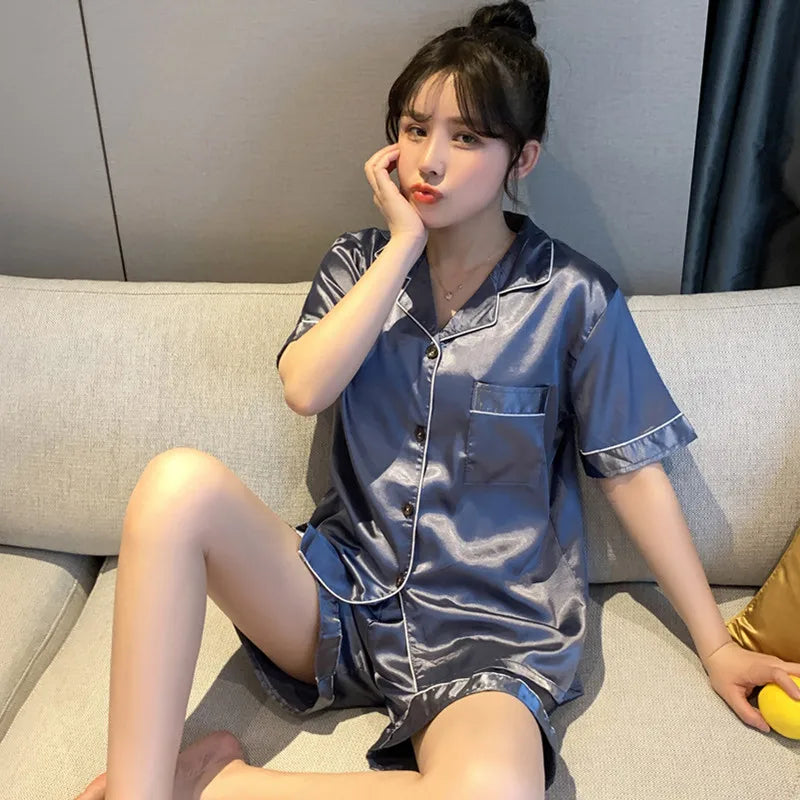Do You Put a Onesie Under Footed Pajamas? Exploring Comfort and Practicality
Table of Contents
- Introduction
- The Purpose of Onesies and Footed Pajamas
- Key Factors to Consider When Dressing Your Baby
- Conclusion
- FAQ
Introduction
When it comes to dressing our little ones for bedtime, the myriad of choices can often lead to confusion. Many parents find themselves pondering the question: Do you put a onesie under footed pajamas? This seemingly simple query opens the door to a broader conversation about comfort, practicality, and the best practices for ensuring a cozy night’s sleep for our children.
In the world of baby clothing, the onesie and footed pajamas are staples that offer both style and convenience. Onesies are designed to provide a snug fit that keeps little ones warm and secure, while footed pajamas, often referred to as sleepers, are designed specifically for sleep, providing full-body coverage. Understanding how to layer these garments effectively can make a significant difference in your child’s comfort and sleep quality.
As we delve deeper into this topic, we will explore the following aspects: the purpose and benefits of both onesies and footed pajamas, when and how to layer these garments, temperature considerations, and practical advice for parents navigating the intricacies of dressing their children for sleep. Ultimately, this guide will empower you with the knowledge to make informed decisions that keep your little ones cozy and happy at night.
So, whether you're a new parent or looking to refine your nighttime routine, let’s embark on this journey together to uncover the best practices for dressing your baby for sleep.
The Purpose of Onesies and Footed Pajamas
Understanding the Onesie
A onesie is a versatile and essential piece of baby clothing. Typically made from soft, breathable fabrics, onesies are designed for both comfort and ease of wear. They come in various styles, including short- and long-sleeved options, making them suitable for different seasons and temperatures. The significant advantage of onesies lies in their practicality; they often feature snap closures at the crotch, facilitating easy diaper changes without the need to fully undress the baby.
Onesies serve several purposes:
- Comfort: The snug fit of a onesie helps to keep babies warm, preventing them from feeling drafts.
- Ease of Movement: Their design allows for unrestricted movement, which is essential as babies begin to crawl and explore.
- Layering Capability: Onesies can be worn alone in warmer months or layered under additional clothing in colder weather, providing versatility throughout the seasons.
The Benefits of Footed Pajamas
Footed pajamas, also known as sleepers, are specifically designed for sleeping. They typically cover the entire body, with feet included, which helps to keep infants warm throughout the night. Footed pajamas can be made from various materials, including fleece for colder weather or lighter cotton for warmer nights.
The benefits of footed pajamas include:
- Full Coverage: The all-in-one design eliminates gaps that could expose skin to cold air, keeping your baby warm and comfortable.
- Convenient Design: Like onesies, many footed pajamas feature zippers or snaps for easy diaper access, making nighttime changes hassle-free.
- Safety: Footed pajamas often eliminate the need for blankets in the crib, reducing the risk of suffocation associated with loose bedding.
When to Use a Onesie Under Footed Pajamas
Now that we understand the individual benefits of both garments, the question arises: When is it appropriate to layer a onesie under footed pajamas? The answer largely depends on several factors, including temperature, your child's comfort level, and the specific activities planned for the evening.
Seasonal Considerations
- Winter Months: During colder months, it is often advisable to layer a onesie under footed pajamas. The added insulation of the onesie can help maintain warmth, especially in homes with cooler temperatures. Opting for a long-sleeved onesie made from breathable fabrics ensures that your baby remains cozy without overheating.
- Summer Months: In warmer weather, a onesie may not be necessary under footed pajamas. Instead, consider using a lightweight, short-sleeved onesie or simply footed pajamas alone, depending on the heat and humidity levels. It’s essential to monitor the room temperature and your baby’s comfort to avoid overheating.
- Transitional Seasons: During spring and fall, layering may be more situational. If temperatures fluctuate significantly during the night, starting with a onesie and then removing it if your baby gets too warm can be an effective strategy.
Activity Level
Understanding your baby's activity level is crucial when deciding how to dress them for sleep. If your little one is particularly active before bedtime, they may benefit from the snug fit of a onesie under their footed pajamas. This added layer can help keep their arms and legs warm as they move around.
Key Factors to Consider When Dressing Your Baby
Temperature Regulation
One of the most critical aspects of dressing your baby for sleep is ensuring they are neither too hot nor too cold. Babies are particularly sensitive to temperature changes, and their bodies are still learning to regulate heat effectively. Here are some tips to help you maintain optimal comfort:
- Room Temperature: Aim to keep your baby's room at a comfortable temperature, typically between 68°F and 72°F (20°C to 22°C). This range aligns with recommendations from pediatricians for safe sleep environments.
- Fabric Choice: Consider the fabric of both the onesie and footed pajamas. Opt for breathable materials like cotton or bamboo that wick away moisture and allow for air circulation. This choice is particularly important during warmer months.
- TOG Ratings: Some sleepwear comes with a TOG (Thermal Overall Grade) rating, which indicates how warm the garment is. A higher TOG rating means more insulation, while a lower rating is better for warmer conditions. Check the TOG ratings of your sleepwear to ensure you are dressing your baby appropriately for the climate.
Individual Comfort Levels
Every baby is different, and what works for one may not work for another. Pay attention to your baby’s cues regarding comfort. Signs that your baby is too warm may include:
- Sweaty head or body
- Flushed cheeks
- Fussiness or restlessness
Conversely, if your baby feels cool to the touch or has cold extremities, it may be time to add an extra layer. Adjust accordingly based on your observations and your child’s reactions.
Practical Tips for Dressing Your Baby at Night
- Layer Wisely: If you choose to layer a onesie under footed pajamas, ensure that the onesie fits well without being too tight. This will prevent discomfort while still providing warmth.
- Avoid Overdressing: It can be tempting to bundle your baby in multiple layers, but overdressing can increase the risk of overheating. Use your best judgment, and when in doubt, opt for fewer layers.
- Check Regularly: Make it a habit to check on your baby during the night. This routine can help you gauge their comfort level and make any necessary adjustments.
- Embrace Flexibility: Don't hesitate to switch up your baby's sleep attire based on their activity level, room temperature, or even their mood. Flexibility is key to ensuring a peaceful night’s sleep.
Conclusion
Navigating the world of baby sleepwear, especially when it comes to the question, Do you put a onesie under footed pajamas?, requires a thoughtful approach that considers various factors, including temperature, comfort, and seasonal changes. By understanding the benefits of both onesies and footed pajamas, as well as the practicalities of dressing your baby for sleep, you can create a cozy and safe sleep environment that promotes restful nights.
As you embrace the journey of parenthood, remember that comfort and safety should always be your top priorities when dressing your little one. With the right choices, you're setting the stage for a soothing bedtime routine that allows your baby to sleep soundly and wake up ready to greet the day with joy.
FAQ
1. Can I use a onesie under footed pajamas in hot weather?
While it's generally not necessary to layer a onesie under footed pajamas in hot weather, you may choose to use a lightweight, short-sleeved onesie if your baby tends to get cold easily. Always monitor your baby's comfort and adjust based on the room temperature.
2. What materials are best for onesies and footed pajamas?
Opt for breathable fabrics like cotton or bamboo. These materials help regulate temperature, wick moisture, and keep your baby comfortable throughout the night.
3. How can I tell if my baby is too hot or too cold in their sleepwear?
Signs of overheating include sweating, flushed cheeks, or fussiness. If your baby feels cool to the touch or has cold extremities, it may indicate they need an additional layer or warmer sleepwear.
4. Is it safe to use blankets with footed pajamas?
It is generally recommended to avoid using loose blankets in the crib for infants due to suffocation risks. Footed pajamas provide full coverage and warmth without the need for additional bedding.
5. How often should I check on my baby during the night?
It's a good practice to check on your baby periodically, especially during the first few months. This allows you to assess their comfort level and make any necessary adjustments to their sleepwear.
By following these guidelines and keeping your baby's comfort in mind, you can create a peaceful and cozy sleep environment that will benefit both you and your child. Remember, a good night’s sleep is essential for growth, development, and overall well-being. Together, let’s ensure that our little ones enjoy the best nights possible!



